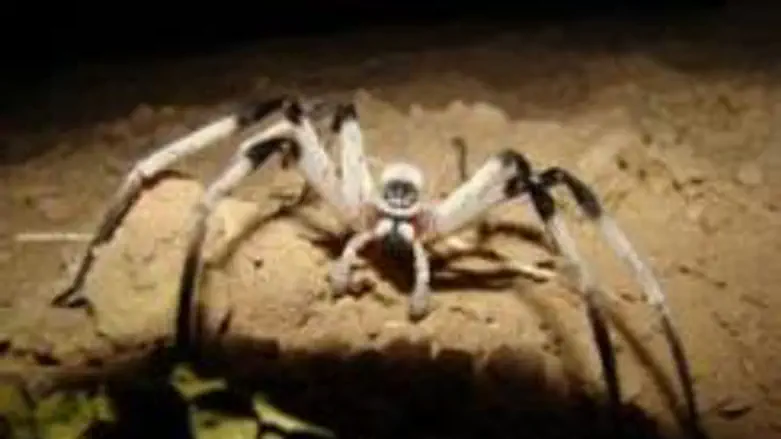
Leaving itsy-bitsy spiders to climb up water spouts, the huge newly discovered Cerbalus aravensis spends its nights puttering atop the sand dunes of the Arava desert.
With long hairy legs reaching up to 5.5 inches (14 cm) in length, the spider discovered by biologists from 
If we do not preserve the few habitats that remain for these species, they will become extinct before we can even discover them the University of Haifa-Oranim in the dunes of the Sands of Samar, in the southern Arava region.
the University of Haifa-Oranim in the dunes of the Sands of Samar, in the southern Arava region.
According to scientists, it is the largest arachnid of its type in the Middle East, a nocturnal creature which makes its home in underground dens sealed off by camouflaged little doors made of sand glued together. It is also apparently most active during the hottest months of the year.
Its home, the Sands of Samar, are the last remaining sand dunes in the southern Arava region. Rezoning for agriculture and sand quarries have reduced the 2.7 square miles of dunes to about 1 square mile.
Dr. Uri Shanas, University of Haifa biology professor and head of the team of discoverers, said the Israel Land Administration intends to renew mining projects in the Sands of Samar, which may threaten the previously-unknown spider. He is urging Israel to preserve the area. "If we do not preserve the few habitats that remain for these species," Shanas warned, "they will become extinct before we can even discover them."